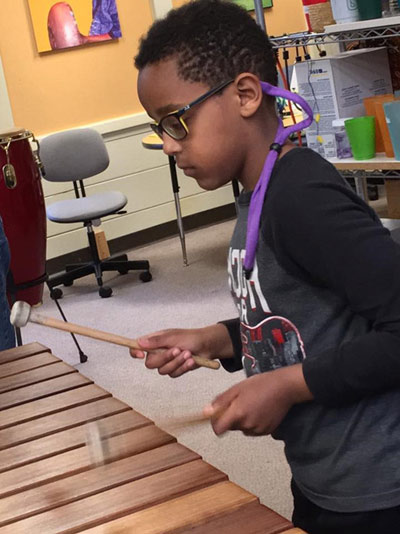Frequently Asked Questions
What if I’m not musical, have never played an instrument, or was told I couldn’t be in band?
Prior musical training, particularly in piano and other forms of percussion, can be an asset by training the ear to listen and familiarizing a student with learning various rhythms. However, in some ways, musical training may be distracting. People trained in Western music (classical or jazz, for instance) may want to fit African music into the system they know. Although there are some similarities, it takes years of steeping ourselves in the music before we get a good sense of this particular style.
Do I need to have my own marimba? Will I need to get a marimba to practice on?
The important thing is to find a way to really take in the rhythms and melodies and make them “your own.” This can be done by tape recording the few parts introduced in a class and playing them while you are doing dishes or walking the dog. If you can sing the line, you have it. All you have to do then is find the keys on the marimba. A keyboard may also serve to let you plunk out a line you have just learned.
How is the music taught?
Is it hard to learn?
The first couple of years of study at Kutsinhira usually involve a repertoire of songs that are relatively straightforward. Most of them are Dumi’s compositions that he shared with his Northwest students. Students may learn all or just a part of the song depending on their capabilities and time to practice. From there the music takes some interesting turns and becomes quite intricate and exciting; for example, the repertoire includes mbira pieces arranged for marimba. I believe that all of us at the Center, including the teachers, see ourselves as perpetual students of this music.
How old do kids have to be to start?
I have found that children who hear the music and tell their parents they would like to learn to play marimba tend to be most successful (in contrast to families in which it’s the parents’ idea that the child learn the music). This is probably true for all musical instruments!
Most of our youth players also play a “western” instrument (e.g., strings, piano, band instrument). Zimbabwean music provides a wonderful complement to these studies because everything is learned by ear, the rhythms and interlocking parts are enthralling and (at least for the beginning marimba repertoire) fine motor control is not essential. Learning music at Kutsinhira also exposures kids to the history and culture of Zimbabwe and includes classroom visits by guest Zimbabwean teachers.
Will I get to play the big marimbas?
What about learning to play mbira?
When can I start?

Contact Us
Executive Director
Gary Spalter
541.337.3281
gary[at]kutsinhira.org
Mailing Address
Kutsinhira Cultural Arts Center
P.O. Box 50188
Eugene, OR 97405-0972

